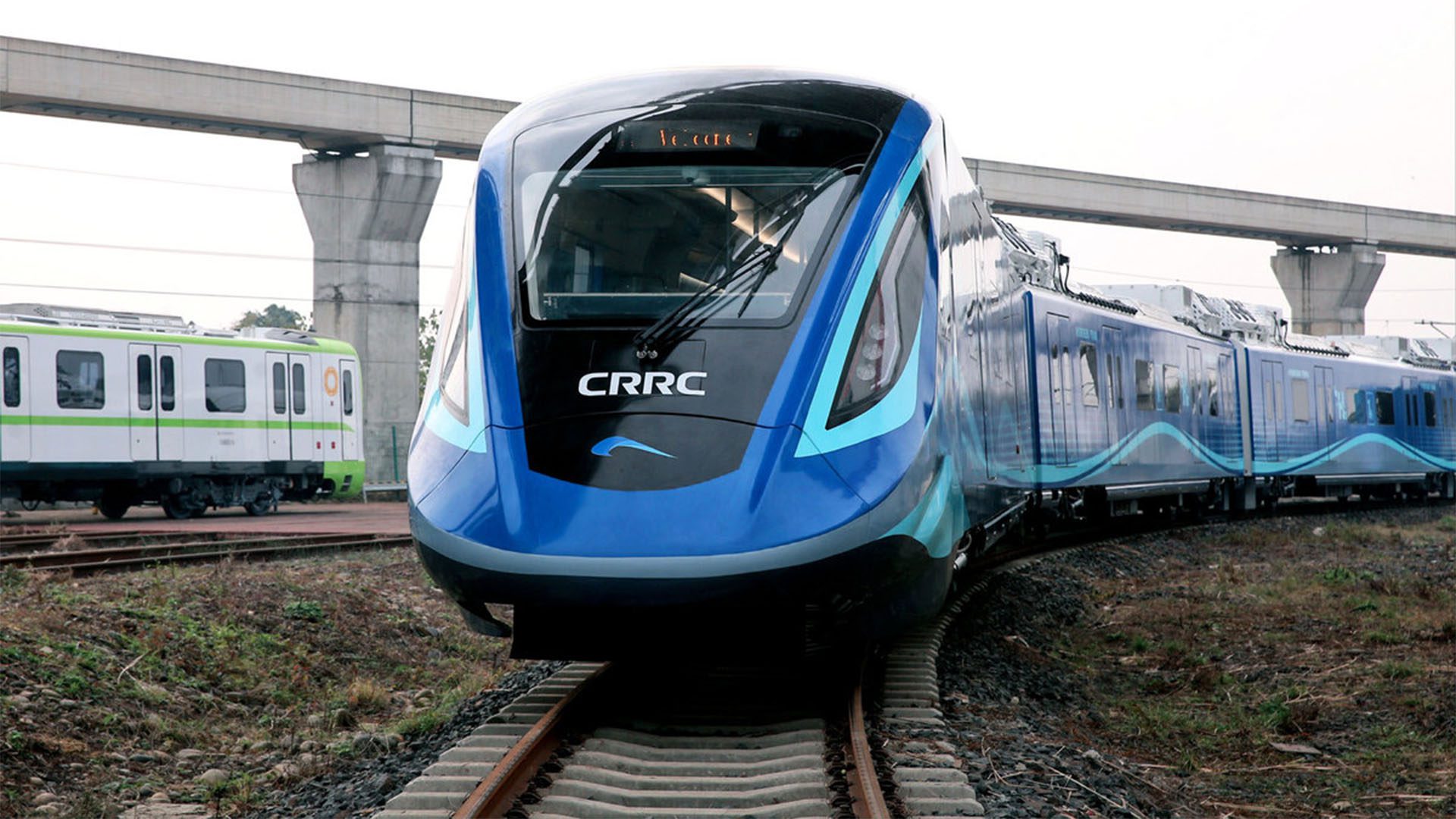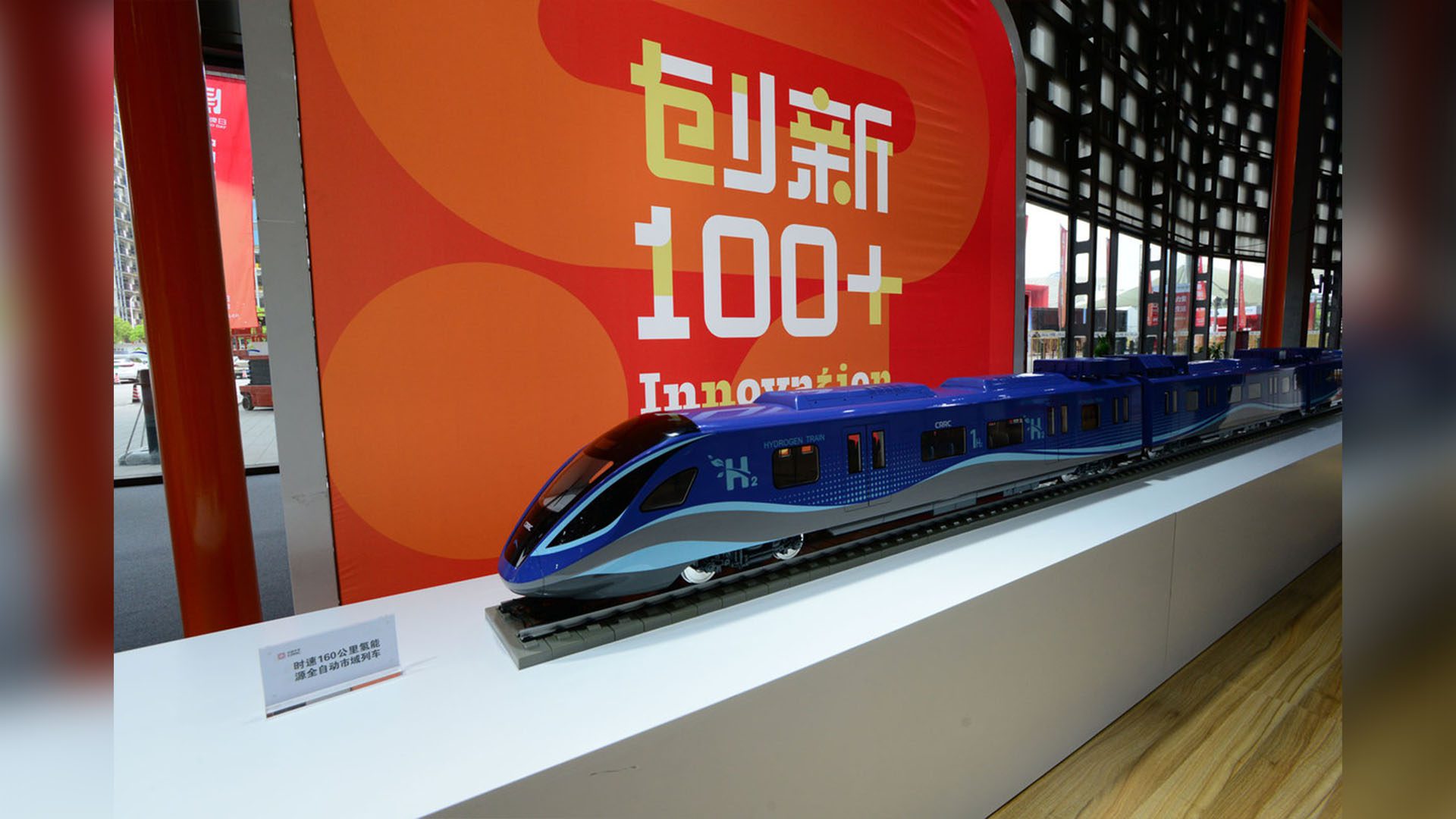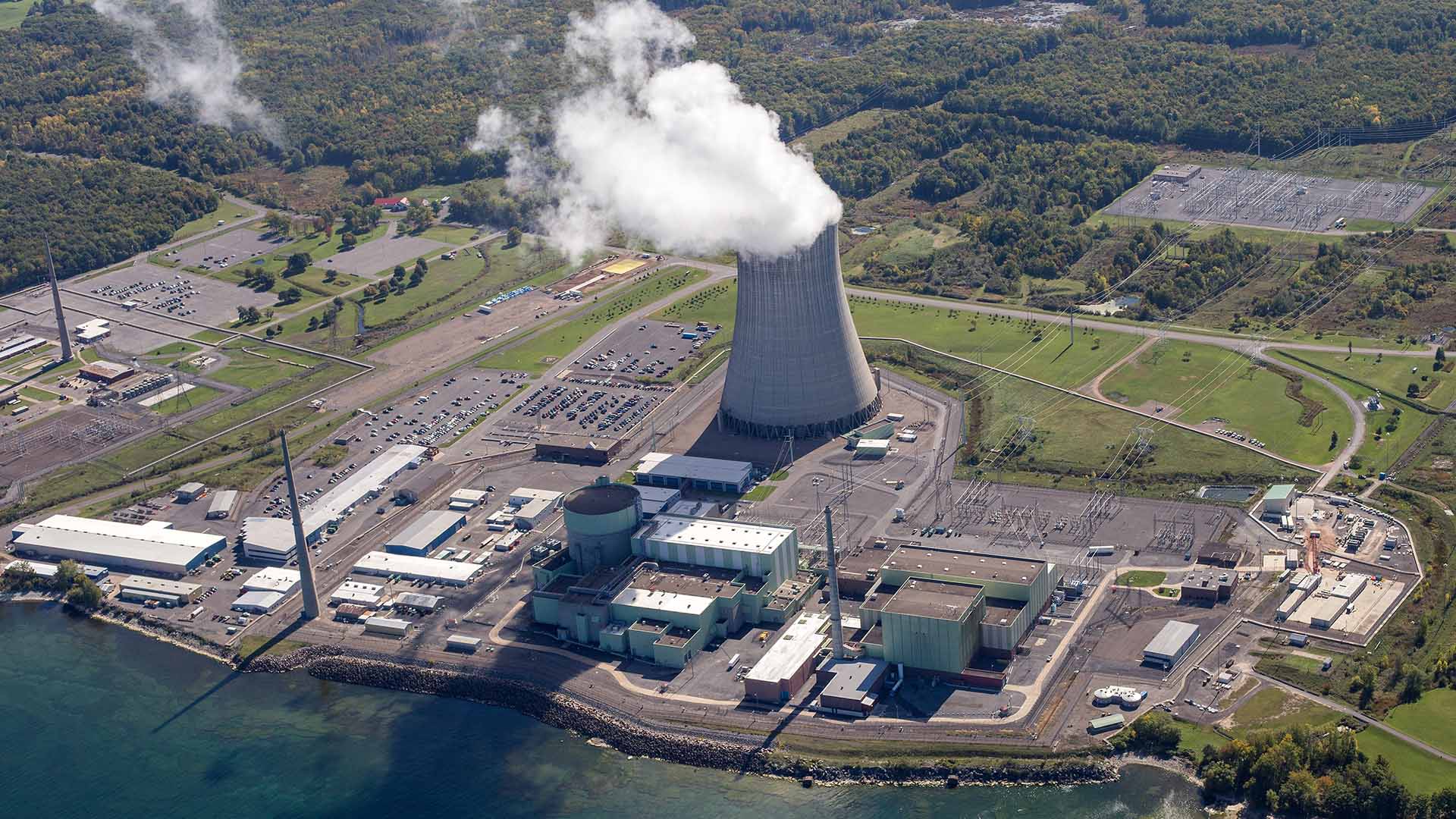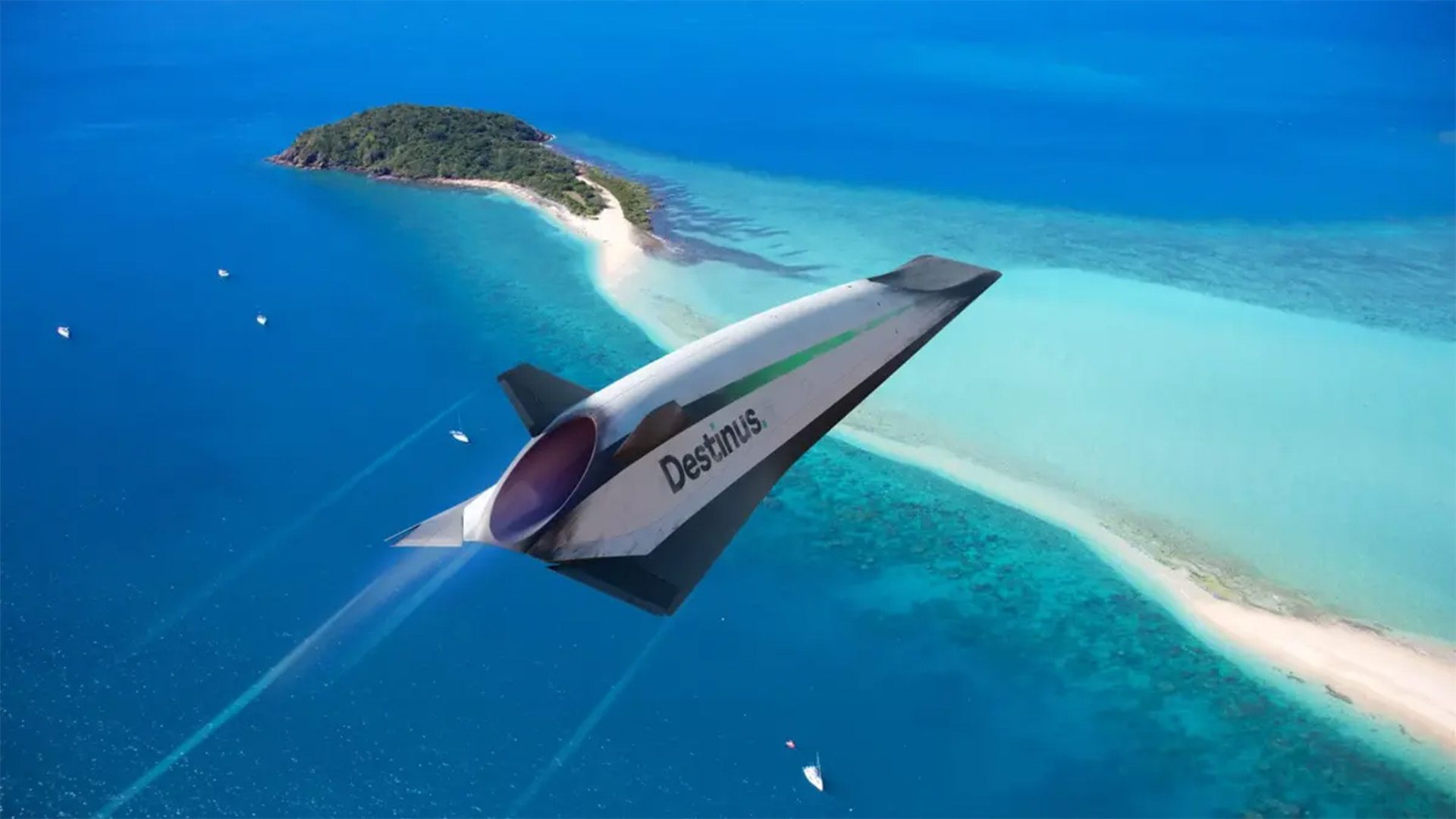The world’s first hydrogen-powered urban train, which is composed of four cars, can reach speeds of up to 99 miles per hour.

Hydrogen-Powered Urban Train
The train uses a combination of hydrogen fuel cells and supercapacitors as an energy source; thanks to the built-in hydrogen power system, the train can travel up to 373 miles on a single charge. An electrochemical reaction of hydrogen and oxygen takes place in the fuel cell, producing only water as a byproduct.
The vehicle is equipped with the highest level of autonomy, meaning it can automatically wake up, start and stop, and return to the depot. To ensure safe driving, it uses 5G high-capacity vehicle-to-ground communication technology and big data analysis.
The hydrogen-powered train also includes multiple intelligent detection systems with thousands of sensors. According to the China Railway Rolling Stock Corporation, “The systems can automatically monitor, diagnose and protect the hydrogen storage system and hydrogen fuel cell system to ensure their safety and reliability during driving.”
This train is not only the world’s first hydrogen-powered urban train but also the fastest hydrogen train to date. Germany launched the first hydrogen-powered passenger trains in 2022 with the Coradia iLint. The fourteen hydrogen trains have a range of 621 miles, traveling at a maximum speed of 87 mph. Unlike China, these trains travel through a rural environment.

Hydrogen as Fuel
Using hydrogen as a fuel has been an increasingly popular clean energy solution around the world because of hydrogen’s sustainability, affordability, and abundance.
Unlike fossil fuels, hydrogen does not produce harmful pollutants or greenhouse gasses like carbon dioxide or sulfur dioxide. The main byproducts of hydrogen combustion are heat and water. Because hydrogen can be produced from water through electrolysis using renewable energy, it is also abundant. And, according to PWC, the cost of green hydrogen will drop by 50 percent by 2030.
Along with hydrogen-powered trains, hydrogen is being used as fuel in vehicles. The use of fuel-cell cars, such as the Toyota Mirai, has been increasing. In China alone, 50,000 hydrogen fuel-cell vehicles are expected to be on the road by 2025. Further developments have also been made in hydrogen-powered planes, like Destinus’ hypersonic hydrogen-powered passenger jet.






